Type IV capitellum fractures in children
- PMID: 31383681
- PMCID: PMC6685368
- DOI: 10.1136/bcr-2019-229957
Type IV capitellum fractures in children
Abstract
Capitellum fractures represent 1% of elbow fractures. A coronal shear fracture which involves the trochlea is classified as a type IV McKee fracture. The combination of its rarity in the paediatric population as well as its unique appearance on X-ray make diagnosis of this fracture a challenge. We present the case of a 14-year-old boy who sustained this fracture falling from his bike. It was diagnosed from the double arc sign on X-ray. In addition, a CT scan was obtained to aid preoperative planning. It was treated by open reduction and fixation with two headless compression screws. Follow-up at 6 months showed no avascular necrosis. The patient could achieve full extension, while flexion was reduced only by 5°. Final follow-up was conducted at 15 months. Anatomic reduction and stable internal fixation are essential for a good outcome in these uncommon paediatric fractures.
Keywords: orthopaedic and trauma surgery; paediatric surgery; trauma.
© BMJ Publishing Group Limited 2019. No commercial re-use. See rights and permissions. Published by BMJ.
Conflict of interest statement
Competing interests: None declared.
Figures

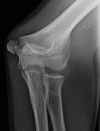


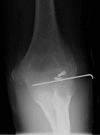

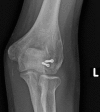
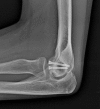

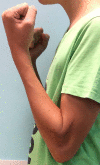
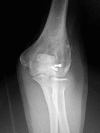

References
-
- Marion J, Faysse R. Fracture of the capitellum. Rev Chir Orthop 1962;48:484–90.
Publication types
MeSH terms
LinkOut - more resources
Full Text Sources
Medical
